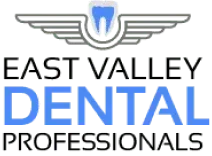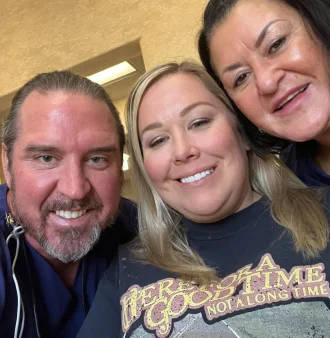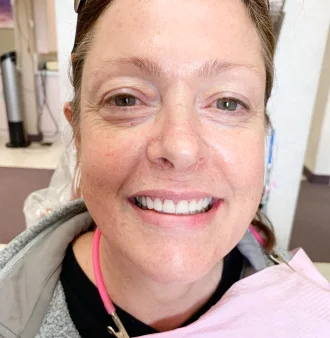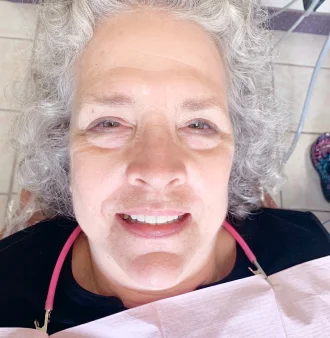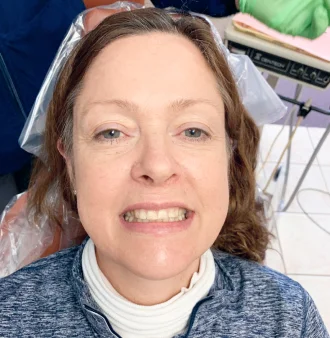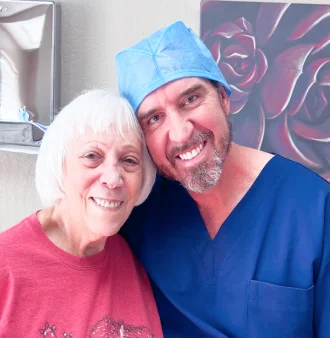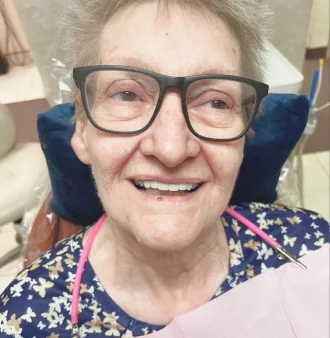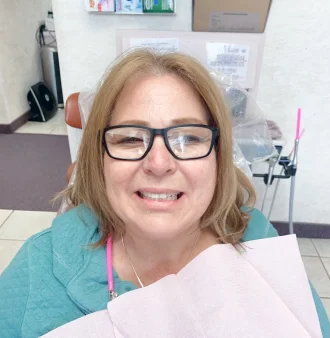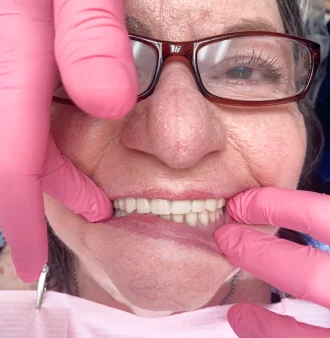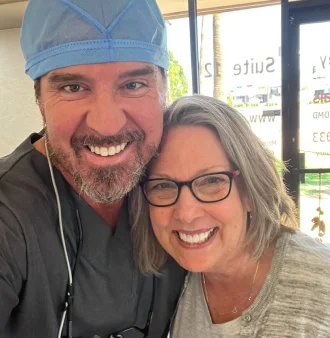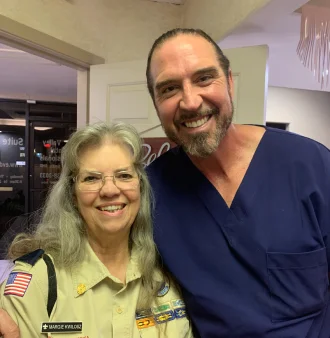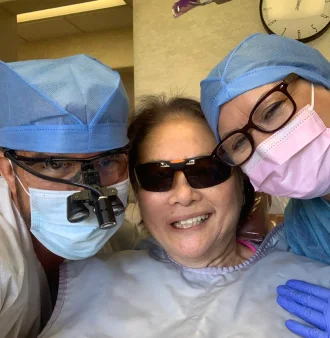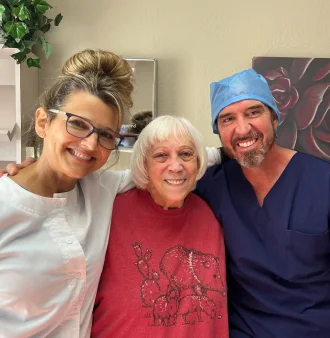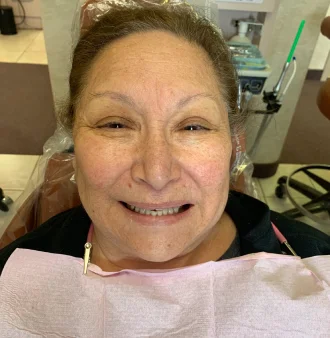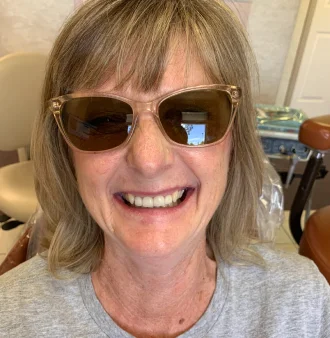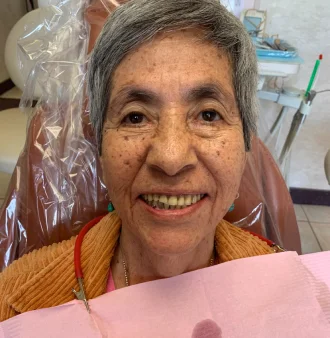Botox ® and Dermal Fillers in Mesa AZ
There are many tools available in cosmetic dentistry that can help improve your confidence in your smile. Botox and Dermal Fillers are two common techniques to achieve a confident smile. Just as crowns or veneers can give patients confidence in their smile, when the wrinkles around the forehead, eyes, and mouth are reduced, patients can feel even more proud of their appearance.
Benefits
- Reduces Pain from TMJ Disorders: Botox injections can help relax the muscles of the jaw, thereby reducing pain associated with TMJ disorders.
- Alleviates Bruxism: Botox can significantly reduce the frequency and intensity of teeth grinding and clenching during sleep.
- Minimizes "Gummy" Smiles: Botox can be used to adjust the lip line to expose less gum and enhance the smile's aesthetic appeal.
- Assists with Denture Fitting: For new denture wearers, Botox can help relax the muscles, making it easier to adjust to new oral appliances.
- Decreases Pain from Orthodontic Treatments: It can temporarily reduce muscle tension and pain associated with orthodontic treatments.
- Improves Facial Esthetics in Dental Reconstructive Procedures: Botox can be used alongside restorative dental procedures to improve the smile and facial symmetry.
What people say
about Us
I've been a patient for fifteen years and I couldn't imagine going elsewhere. Everyone is professional, kind and the best of the best! I've had most every oral procedure and each has been flawless.
They are always friendly, attentive, have quick service and respond quickly to questions.
EVDP is amazing, the patient care is top notch and they do beautiful work! I felt so taken care of as patient and strongly recommend their services!
The visit was great I hope I can come up with the money some he can fix my mouth for me. At 53 have never had a kinder Dr. in my mouth. Wish I had insurance so he could do my work today.
Everyone was helpful and kind. I appreciate the introductions of who people were. My stay was pleasant and I'm hopeful my tooth problem is resolved.
At EVDP, we have a team of qualified professionals providing Botox and dermal fillers in Mesa. Both treatments can help to soften wrinkles and facial creases through different ways. If you are interested in getting a Botox treatment or a dermal filler treatment in Mesa, you can schedule an appointment with us today. We can help you assess if the therapy is a right fit for you and your situation and answer any questions that you may have.
Botox
Botox is not a kind of a product, but a brand name. It stands for botulinum toxin, which is a neurotoxin injection designed to temporarily eliminate fine lines, crow’s feet and wrinkles. It works by relaxing facial muscles and has uses in both medicine and dentistry.
These uses can include treatment of an overactive bladder or migraine headaches, as well as cosmetic uses to reduce “worry lines” and “crows feet”. It can be a safe and effective way to temporarily remove wrinkles or lines on the forehead, upper lip, or around the eyes.
What does Botox® do?
The injected Botox® blocks the nerve impulses to the muscles that cause wrinkles and relaxes the muscles. It does not normally interfere with facial expressions. Dramatic improvement in appearance can be seen within two to seven days! However, the treatment is temporary, as the injection wears off and the muscle is able to contract again. Normally the treatment lasts three months, but can last for six months for some patients.
Is Botox Safe?
This brings us to the most important question. Is it safe? The general is answer is “yes.” In fact, Botox has a safe history. According to a study, the FDA only recorded 36 serious adverse effects of Botox from 1989 to 2003. And considering that millions undergo this treatment, such number is relatively small. The safety record for Botox is highly impressive. Some studies might cast doubts as to the safety of Botox. But as far as figures and recorded incidences are concerned, this injection solution is pretty safe.
Is Botox Right for You?
Botox works for everyone. But there are things you need to consider first before you decide. You need to understand that Botox can be expensive especially because you need to periodically get an injection. It must be clear to you first that this treatment is temporary and you need maintenance to keep the effects. Once these minor issues are clear to you, then there’s no reason why you can’t or won’t get a Botox. But if you really want to be extra sure if such treatment is right for you, the best you can do is ask a professional.
How Long Does it Take?
People think that Botox hurts and takes much time. Well, you need to know that it is actually the contrary. The treatment does not take that much time because administering the solution only lasts around 10 minutes.
Is Botox Injection Painful?
For cosmetic procedures, Botox® is virtually painless and has a very short recovery time. It is administered via a brief, small injection. It is not painful too and is pretty comfortable.
There may be mild discomfort during the injection itself, and some patients have reported minor swelling or redness that may appear in the few days after the treatment. But other than these, you won’t feel a thing.
Is the effect of Botox Permanent?
No. The effect of Botox is not permanent. In fact, it’s a temporary solution for the wrinkles and lines. Typically, patients find that the effect of Botox lasts up to 3 to 4 month, though it depends on each person – on some patients the effects caused by Botox last up to six months. In order to keep the results, it needs to be administered periodically.
Who is a Candidate for Botox?
Both men and women can benefit from Botox. Patients may decide to temporarily reverse the natural signs of aging for any number reasons. Oftentimes patients choose Botox to help them maintain a professional appearance for work.
Why Should I Go to a Dentist Instead of a Dermatologist or Plastic Surgeon?
It can be argued that dentists are among the most qualified professionals to perform Botox treatments around the mouth and face. While other medical personnel have a basic overview of the oral and maxillofacial areas, dentists are much more knowledgeable and experienced in this region. Dentists are specialized in oral, perioral, and oro-facial procedures and should naturally be thought of an appropriate resource for Botox® treatment.
Why Can Dr. Collins Perform a Botox® Procedure?
Dental students learn the anatomy of the entire human body, with special emphasis on the head and neck, while studying to become dentists. The areas in and around mouth and face are where dentists treat patients on a daily basis. This hands-on experience gives dentists a natural advantage when it comes to giving Botox® injections.
With a few additional courses, dentists can become certified to give Botox® injections to their patients who request it. Having taken the appropriate courses, Dr. Collins is qualified and able to give Botox® to her patients.
What Does a Botox® Treatment Involve?
Botox is administered through a series of brief, tiny injections just under the skin and into the adjacent muscle. Most patients find this procedure quick and painless, however some patients do experience mild discomfort during the procedure or soreness around the injection site in the next few days. Topical anesthetic may be used if desired.
Are There any Disadvantages of Botox?
Potential disadvantages may include soreness, dizziness, bruising, droopiness, and irritation at the injection site. These and other undesirable outcomes are uncommon. Most patients experience no negative side effects and are very pleased with the results of the procedure.
Is Botox Treatment Confidential?
Like all dental procedures, our patients’ Botox® treatments are confidential. More and more patients across the country and around the world are enjoying the benefits of Botox treatments. But, as with many other aesthetic or cosmetic procedures, patients may prefer not to disclose to their family or friends that they are choosing to have procedures done to alter their appearance.
What is the time frame for this procedure?
Botox® is not a permanent solution; follow-up visits about three to six months apart are needed to keep wrinkles from reappearing.
Your Smile's Happy Place! Come visit us and see why
Fun atmosphere, friendly staff, and zero dentist nightmares
